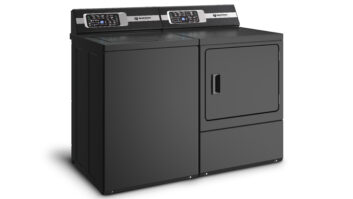NEW YORK – Looking to attract a more savvy audience of image-quality-conscious photographers, leading camera makers rolled out a number of new interchangeable- lens cameras (ILCs) offering advanced resolution and responsiveness.
In addition to the Panasonic unveiling the world’s first Micro Four Thirds ILC capable of capturing 4K Ultra HD video, Olympus revealed a new addition to its OM-D Micro Four Thirds camera family, while Sony pulled out its Alpha a6000 mirrorless compact.
The following is a look at recent entries released in time for Japan’s upcoming CP+ Expo:
Olympus introduced the compact E-M10 to its OM-D family of mirrorless ILCs, combining high image quality, speed, and power with a compact and stylish all-metal body.
The Olympus OM-D E-M10 will be available in March at a $699 suggested retail for the body only (black and silver versions are available), and $799 for the body and an M.Zuiko Digital 14-42 mm f3.5-5.6 II R lens.
Key features include the TruePic VII image processor, a 16-megapixel Live MOS sensor, built-in Wi-Fi technology, a high-speed electronic viewfinder (EVF), three-axis image stabilization, ultra-fast autofocus and a built-in flash.
The AF system is said to be Olympus’ fastest to date, using 81 target areas to cover the whole image. Small AF Target and Super Spot AF modes make it possible to zoom in and focus accurately on minute sections of the frame.
Panasonic introduced Friday the Lumix GH4, its first Micro Four Thirds compact system camera capable of recording 4K Ultra HD video.
Pricing on the GH4 camera will be announced later, but it will offer a number of high-end video-centric features, including 4K 4,096 by 2,160/24p Cinema 4K and QFHD 4K Ultra HD 3,840 by 2,160/30p in MOV/MP4 formats; and FullHD video in up to 200Mbps bit rate (All-Intra) and 100Mbps (IPB) without progressive and AVCHD at a variety of frame rates including 1080/120p, according to usage.
Other features include a newly developed 16-megapixel Live MOS sensor, 1/8,000-sec. shutter, 1 million-dot OLED screen, and 3,000-dot, 21mm OLED electronic viewfinder.
Panasonic’s new camera also has the ability to output video in real time through a MiniHDMI connection to a monitor.
The camera will also have time coding, 10/8-bit output, and 3G-SDI and XLR adaptor availability.
Other GH4 features include focus peaking (with changeable colors), a quad-core processor, and built-in Wi-Fi connectivity with NFC.
It will also have an improved and faster high-performance contrast autofocus system that integrates Panasonic’s Depth From Defocus (DFD) technology.
Sony’s new Alpha a6000, shipping in April at a $799 suggested retail with a 16-50mm kit lens, incorporates a 24.3-megapixel APS-C CMOS sensor, ISO 25,600 (51200 in Multi Frame NR), Fast Hybrid AF system with 179 (phase-detection AF) and 25 (contrast-detection AF), and SVGA OLED electronic viewfinder with 100 percent coverage, a 3-inch tiltable LCD screen, 11fps continuous shooting, 1080/60p/24p movie capture, built-in Wi-Fi with NFC, and access to PlayMemories camera apps.
Sony said the top priorities in designing the a6000 were maximum image quality, responsiveness and mobile connectivity.
The camera offers a smaller and lighter body making it easier to carry around. It is also the second mirrorless compact system camera in the Sony line to be launched under the combined Alpha family, after the company decided to drop the NEX subbrand designation for mirrorless interchangeable lens cameras.
Sony said the new hybrid AF system is the world’s fastest for a camera with an APS-C sized sensor.













